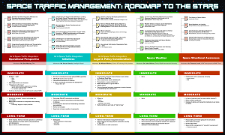Presentation Type
Paper (supporting PowerPoints may be added as Additional Files)
Location
Bass Auditorium
Start Date
26-2-2019 9:15 AM
Abstract
The development in commercial space transportation is strongly driven by a growing demand for payload capacities and cost efficient access to space. Accordingly, there is also a demand for further launch opportunities in the European region. Factors such as short waiting times for launches, rapid response capabilities, proximity of production sites to the launch site and independence from established and highly utilized launch systems are increasingly playing a role. Air launches are discussed as a way to meet this demand. They also offer the particular advantage of relatively low requirements on infrastructure and location of the spaceport compared to conventional vertical launch systems. Since the actual launch is not bound to the spaceport, this method also offers a high degree of flexibility with regard to the design of the launch trajectory and the associated interaction with air traffic. This paper examines the interaction between proposed air launch operations and air traffic for a previously selected mission profile in Northern Europe. Data from historic launch events are used as an input for modelling of the required flight restriction areas. The analysis provides information on the expected extent of air traffic impairments and existing optimization capabilities.
Area of Interest
NAS Integration
Biographies
View bio for Sven Kaltenhaeuser
Included in
Assessment of the Impact of Air Launch Operations on Air Traffic in Europe
Bass Auditorium
The development in commercial space transportation is strongly driven by a growing demand for payload capacities and cost efficient access to space. Accordingly, there is also a demand for further launch opportunities in the European region. Factors such as short waiting times for launches, rapid response capabilities, proximity of production sites to the launch site and independence from established and highly utilized launch systems are increasingly playing a role. Air launches are discussed as a way to meet this demand. They also offer the particular advantage of relatively low requirements on infrastructure and location of the spaceport compared to conventional vertical launch systems. Since the actual launch is not bound to the spaceport, this method also offers a high degree of flexibility with regard to the design of the launch trajectory and the associated interaction with air traffic. This paper examines the interaction between proposed air launch operations and air traffic for a previously selected mission profile in Northern Europe. Data from historic launch events are used as an input for modelling of the required flight restriction areas. The analysis provides information on the expected extent of air traffic impairments and existing optimization capabilities.



Comments
Visit the panel session NAS Integration Part 1: Getting There and Back